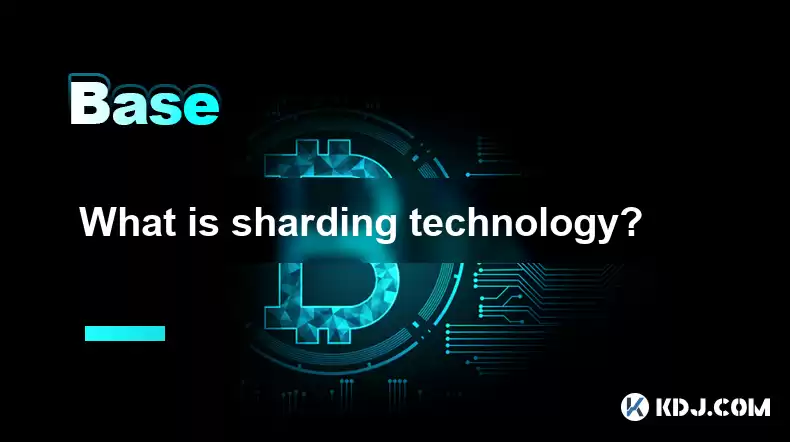-
 Bitcoin
Bitcoin $115100
1.27% -
 Ethereum
Ethereum $3675
2.71% -
 XRP
XRP $2.995
1.45% -
 Tether USDt
Tether USDt $1.000
0.02% -
 BNB
BNB $769.8
2.64% -
 Solana
Solana $168.0
3.25% -
 USDC
USDC $0.9999
-0.01% -
 TRON
TRON $0.3371
1.48% -
 Dogecoin
Dogecoin $0.2051
3.36% -
 Cardano
Cardano $0.7394
2.30% -
 Hyperliquid
Hyperliquid $38.15
0.42% -
 Stellar
Stellar $0.3966
-0.36% -
 Sui
Sui $3.486
2.93% -
 Chainlink
Chainlink $16.72
2.52% -
 Bitcoin Cash
Bitcoin Cash $568.0
4.36% -
 Hedera
Hedera $0.2440
2.59% -
 Ethena USDe
Ethena USDe $1.001
0.04% -
 Avalanche
Avalanche $22.16
2.06% -
 Litecoin
Litecoin $119.1
-0.73% -
 UNUS SED LEO
UNUS SED LEO $8.991
0.04% -
 Toncoin
Toncoin $3.232
-0.39% -
 Shiba Inu
Shiba Inu $0.00001233
2.82% -
 Uniswap
Uniswap $9.717
2.53% -
 Polkadot
Polkadot $3.664
1.85% -
 Dai
Dai $1.000
0.01% -
 Monero
Monero $281.2
-3.89% -
 Bitget Token
Bitget Token $4.350
1.55% -
 Cronos
Cronos $0.1428
5.07% -
 Pepe
Pepe $0.00001050
3.68% -
 Aave
Aave $262.3
3.54%
What is sharding technology?
Sharding enhances blockchain scalability by dividing it into smaller, parallel processing shards, increasing transaction throughput and reducing latency; however, complex mechanisms are needed to maintain data consistency and security across these shards.
Mar 06, 2025 at 06:25 am

Key Points:
- Sharding divides a blockchain's workload across multiple smaller chains, improving scalability.
- Each shard processes a subset of transactions, increasing throughput and reducing latency.
- Sharding requires complex mechanisms to ensure data consistency and security across shards.
- Different blockchain projects implement sharding with varying approaches and complexities.
- While promising, sharding faces challenges in implementation and maintaining security.
What is Sharding Technology?
Sharding is a database scaling technique adapted for blockchain technology to address the limitations of processing ever-increasing transaction volumes. In essence, it involves splitting a blockchain into smaller, more manageable pieces called "shards." Each shard operates as a separate, independent blockchain, processing a subset of the total transactions. This distribution of workload significantly improves the network's scalability and efficiency.
How Does Sharding Work?
The process involves strategically dividing the network's nodes and transactions across multiple shards. Each shard maintains its own ledger, containing a portion of the overall blockchain data. This allows for parallel processing of transactions, drastically increasing the network's throughput. However, sophisticated mechanisms are needed to maintain data consistency and security across all shards.
Data Consistency and Security in Sharded Blockchains:
Maintaining data consistency across shards is crucial. Cross-shard communication protocols are essential to ensure all shards have a coherent view of the blockchain state. This often involves complex consensus mechanisms and data synchronization techniques. Security is equally vital; a compromised shard could compromise the entire network. Therefore, robust security measures are paramount for each individual shard and the communication channels between them.
Different Approaches to Sharding:
Different blockchain projects employ varying approaches to sharding. Some prioritize simplicity, focusing on easier implementation, while others strive for more sophisticated solutions to maximize throughput and security. These differences often stem from the specific needs and design goals of each blockchain network. The level of complexity also varies significantly between different implementations.
Challenges and Limitations of Sharding:
Despite its potential, sharding faces significant challenges. The complexity of implementation and maintenance can be substantial. Ensuring data consistency and security across multiple shards requires sophisticated protocols and rigorous testing. The design and implementation must carefully balance scalability with security to prevent vulnerabilities.
Sharding and Transaction Throughput:
One of the primary benefits of sharding is its ability to dramatically increase transaction throughput. By distributing the workload, shards can process transactions in parallel, resulting in a significant reduction in transaction confirmation times. This is particularly crucial for blockchains aiming to support a large number of transactions per second.
Sharding and Network Scalability:
Sharding significantly enhances the scalability of a blockchain network. As the number of transactions increases, the network can simply add more shards to handle the growing load, avoiding the performance bottlenecks often associated with single-chain blockchains. This allows for sustained growth and adoption without compromising performance.
Data Availability and Retrieval in Sharded Networks:
Retrieving data from a sharded network requires efficient mechanisms to locate the relevant shard. This often involves a directory or routing mechanism that directs queries to the appropriate shard containing the requested data. Ensuring efficient data retrieval is critical for the usability and functionality of the sharded blockchain.
The Role of Cross-Shard Communication:
Effective communication between shards is paramount for maintaining data consistency and security. Protocols must be in place to allow shards to exchange information and coordinate their operations. This communication is crucial for reaching consensus on the state of the blockchain and preventing conflicts.
Security Considerations in Sharded Blockchains:
Security is a major concern in sharded blockchains. The distributed nature of the network introduces new vulnerabilities that must be carefully addressed. Robust security mechanisms are needed to protect each shard and the communication channels between them, preventing attacks and data breaches.
Comparison of Sharding with Other Scaling Solutions:
Sharding is one of several scaling solutions for blockchains, alongside techniques like layer-2 solutions and state channels. Each approach has its own strengths and weaknesses, and the optimal choice depends on the specific needs and characteristics of the blockchain network. Sharding's unique advantage lies in its ability to scale the blockchain itself.
Future Developments in Sharding Technology:
Research and development in sharding technology continue to evolve. New protocols and algorithms are being developed to improve efficiency, security, and ease of implementation. These advancements promise to further enhance the scalability and performance of sharded blockchains.
Common Questions and Answers:
Q: What is the difference between sharding and layer-2 solutions?
A: Sharding scales the blockchain itself by dividing it into smaller parts, while layer-2 solutions build on top of the existing blockchain to handle transactions off-chain, then settling them on the main chain.
Q: Is sharding a perfect solution for blockchain scalability?
A: No, sharding has its own challenges, including complex implementation and potential security vulnerabilities. It’s one solution among many, and its suitability depends on the specific blockchain's design and needs.
Q: How does sharding impact transaction fees?
A: Potentially, sharding can reduce transaction fees by increasing throughput and reducing congestion. However, the actual impact depends on the specific implementation and network usage.
Q: Which cryptocurrencies use sharding?
A: Several projects are exploring or implementing sharding, including Ethereum (with its planned transition to sharding), and other projects are actively developing sharding mechanisms. Specific implementations vary considerably.
Q: What are the security risks associated with sharding?
A: Security risks include potential vulnerabilities in the cross-shard communication protocols, and the possibility of a compromised shard affecting the entire network. Robust security measures are crucial.
Disclaimer:info@kdj.com
The information provided is not trading advice. kdj.com does not assume any responsibility for any investments made based on the information provided in this article. Cryptocurrencies are highly volatile and it is highly recommended that you invest with caution after thorough research!
If you believe that the content used on this website infringes your copyright, please contact us immediately (info@kdj.com) and we will delete it promptly.
- BlockDAG, Litecoin, and Cardano: Charting the Course in Crypto's Dynamic Waters
- 2025-08-07 09:09:06
- Fireverse Token: Igniting a Musical Revolution in Web3
- 2025-08-07 08:27:45
- Ethereum, L2 Withdrawals, and Decentralization: A New Yorker's Take
- 2025-08-07 08:32:33
- Avalanche vs. Ruvi AI: Daily Sales Tell a Story of Crypto Disruption
- 2025-08-07 06:29:35
- DeSoc: The Crypto to Buy Now for a Decentralized Future (and Maybe 43x Gains!)
- 2025-08-07 06:50:16
- Arctic Pablo Coin: Riding the Meme Coin Wave with a Deflationary Twist
- 2025-08-07 07:18:13
Related knowledge

What is the difference between CeFi and DeFi?
Jul 22,2025 at 12:28am
Understanding CeFi and DeFiIn the world of cryptocurrency, CeFi (Centralized Finance) and DeFi (Decentralized Finance) represent two distinct financia...

How to qualify for potential crypto airdrops?
Jul 23,2025 at 06:49am
Understanding What Crypto Airdrops AreCrypto airdrops refer to the distribution of free tokens or coins to a large number of wallet addresses, often u...

What is a crypto "airdrop farmer"?
Jul 24,2025 at 10:22pm
Understanding the Role of a Crypto 'Airdrop Farmer'A crypto 'airdrop farmer' refers to an individual who actively participates in cryptocurrency airdr...

What is the difference between a sidechain and a Layer 2?
Jul 20,2025 at 11:35pm
Understanding the Concept of SidechainsA sidechain is a separate blockchain that runs parallel to the main blockchain, typically the mainnet of a cryp...

What is the Inter-Blockchain Communication Protocol (IBC)?
Jul 19,2025 at 10:43am
Understanding the Inter-Blockchain Communication Protocol (IBC)The Inter-Blockchain Communication Protocol (IBC) is a cross-chain communication protoc...

How does sharding improve scalability?
Jul 20,2025 at 01:21am
Understanding Sharding in BlockchainSharding is a database partitioning technique that is increasingly being adopted in blockchain technology to enhan...

What is the difference between CeFi and DeFi?
Jul 22,2025 at 12:28am
Understanding CeFi and DeFiIn the world of cryptocurrency, CeFi (Centralized Finance) and DeFi (Decentralized Finance) represent two distinct financia...

How to qualify for potential crypto airdrops?
Jul 23,2025 at 06:49am
Understanding What Crypto Airdrops AreCrypto airdrops refer to the distribution of free tokens or coins to a large number of wallet addresses, often u...

What is a crypto "airdrop farmer"?
Jul 24,2025 at 10:22pm
Understanding the Role of a Crypto 'Airdrop Farmer'A crypto 'airdrop farmer' refers to an individual who actively participates in cryptocurrency airdr...

What is the difference between a sidechain and a Layer 2?
Jul 20,2025 at 11:35pm
Understanding the Concept of SidechainsA sidechain is a separate blockchain that runs parallel to the main blockchain, typically the mainnet of a cryp...

What is the Inter-Blockchain Communication Protocol (IBC)?
Jul 19,2025 at 10:43am
Understanding the Inter-Blockchain Communication Protocol (IBC)The Inter-Blockchain Communication Protocol (IBC) is a cross-chain communication protoc...

How does sharding improve scalability?
Jul 20,2025 at 01:21am
Understanding Sharding in BlockchainSharding is a database partitioning technique that is increasingly being adopted in blockchain technology to enhan...
See all articles

























































































